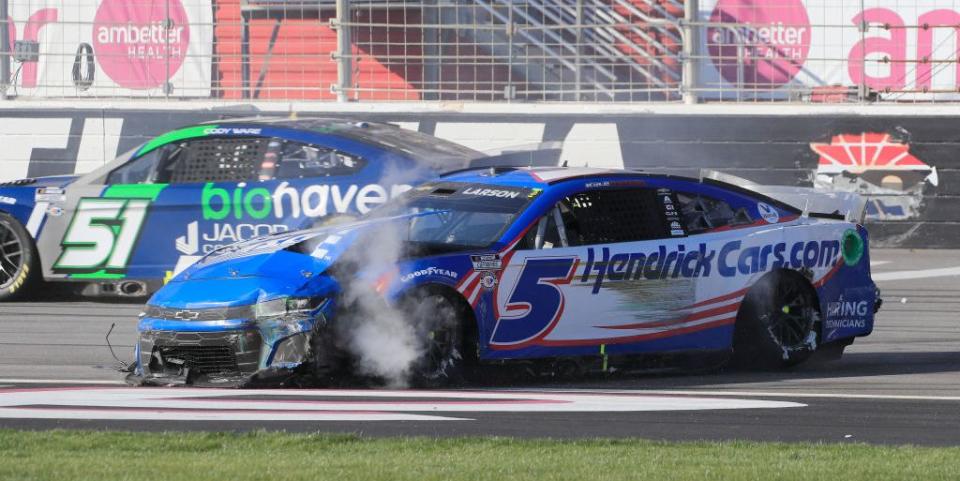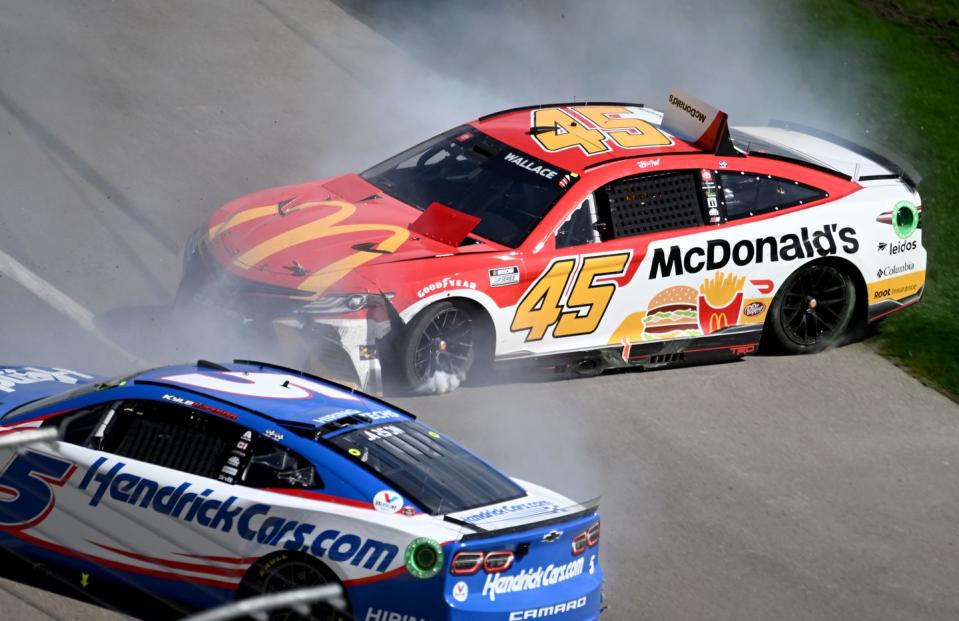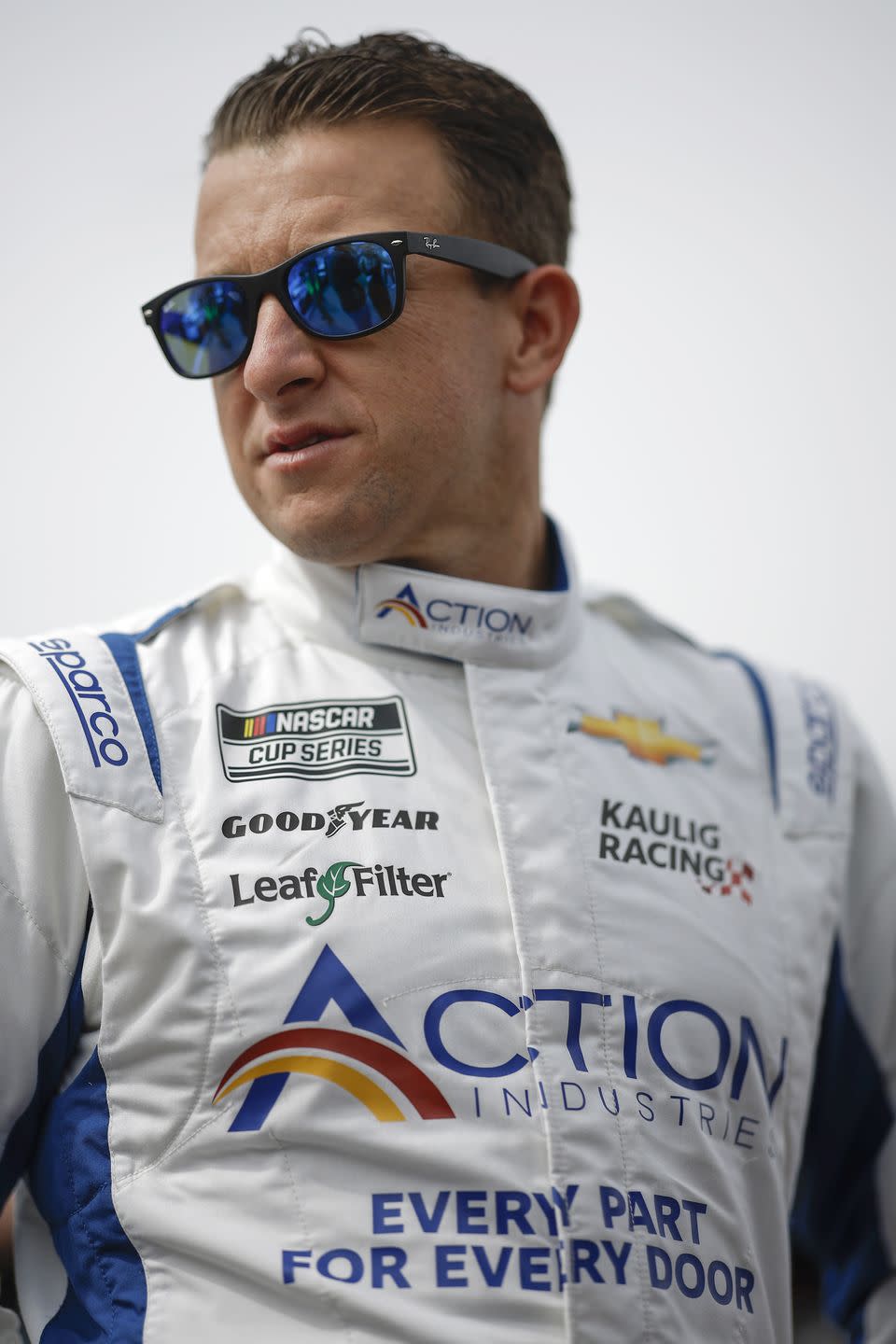Why Current Era of NASCAR Cup Racing Might Be the Most Aggressive Ever

In addition to the parity of the vehicles, NASCAR veteran AJ Allmendinger believes the Stage racing NASCAR implemented in 2017 contributes to on-track aggressiveness.
Prior to the introduction of Stage racing and parity in the vehicles, close finishes were often the exception more than the rule.
During this year’s Atlanta weekend, Kyle Busch cited times when drivers raced at NASCAR’s top level and actually respected each other on the track.
A lack of respect on the race track in NASCAR’s Cup Series has been cited as generational, a reflection of an overall issue in society, but A.J. Allmendinger believes it’s the result of the parity that now exists in stock car racing’s top level.
“At all these race tracks we’re really close,” Allmendinger said. “These cars are sometimes tough to pass. The days of somebody catches you, and you just wave them by, and you go get them 20, 50 laps later, it’s hard to do now. If you lose a couple of spots, you may never get those back for 50, 100 laps, and that can completely change the way the race goes.”

Today, the parts used to assemble the NASCAR Cup cars are acquired from vendors designated by the sanctioning body, not fabricated in each shop with special tweaks incorporated into them. More than two dozen vendors are used for the parts ranging from chassis to clutch shaft, driveshafts and transaxle.
Also, the major teams no longer build their own engines. Roush Yates Engines furnishes the powerplants for the Ford teams. The Chevrolet teams acquire their engines from Hendrick Motorsports or ECR Engines, while the Toyota operations obtain theirs from Toyota Racing Development.

addition to the parity of the vehicles, Allmendinger believes the Stage racing NASCAR implemented in 2017 contributes to the on-track aggressiveness due to the points that are available at the end of each Stage.
It’s the nature of the way we race now, right or wrong,” Allmendinger said. “It’s a unique thing to stock car racing. You use the front of it (car), use the sides of it, and you can get away with it. For the most part, kind of have at it. I think NASCAR racing in general right now is just super aggressive at every race track.
I think it’s probably more aggressive than it’s ever been … but … it’s on us to fix it. Otherwise, you start asking NASCAR to make calls. I don’t think anybody wants that. If we all think it’s too aggressive, then we probably need to fix it.”
Prior to the introduction of Stage racing and parity in the vehicles, close finishes were often the exception more than the rule. Two-time NASCAR champion Ned Jarrett won the 1965 Southern 500 at Darlington, S.C., by 14 laps.
How Ned Jarrett Once Won a Cup Race by 14 Laps
Seven-time NASCAR champion Richard Petty won the 1974 Delaware 500 at Dover, Del., by three laps and 16 of the 40 cars that started the event were running at the finish. Three-time NASCAR champion David Pearson won the 1975 Mason-Dixon 500 at Dover by seven laps and Dick May, who finished last in the 35-car field, listed his reason out as “quit”. Seventeen of the 42 cars that started the 1987 Coca-Cola 600 were running at the finish when winner Kyle Petty received the checkered flag. Petty was the only driver on the lead lap.
During this year’s Atlanta weekend, Kyle Busch cited the era in which Mark Martin, Dale Jarrett, Rusty Wallace, Jeff Gordon, Jimmie Johnson and Tony Stewart raced at NASCAR’s top level as an era when the drivers respected each other. Once again, no required vendors, individual engine shops for the major operations, and no Stage racing.
“I was taught by guys like Jeff and Jimmie, Tony and Mark,” Allmendinger said. “The first things they always said to me is, ‘Hey, we don’t have to like you, but it’d really help if we respect you.’”
Martin’s two most successful seasons were 1998 when he won seven races with Roush Racing and 2009 when he visited victory lane five times with Hendrick Motorsports.
In 1998, Gordon won the Coca-Cola 600 by less than a second, but there were only nine cars on the lead lap. Only five of the 43 cars that started the event failed to finish. Jarrett won the spring Dover race that year. His margin of victory was 13.117 seconds over Jeff Burton and only four cars finished on the lead lap. Gordon’s 3.631-second victory in that year’s Pepsi Southern 500 came with only four cars finishing on the lead lap.
Martin’s narrowest victory margin in 1998 came at Texas where he inked out a 0.573-second win over Roush Racing teammate Chad Little. Three of his other victories exceeded a second and the remaining three surpassed two seconds.
In 2009, the Coca-Cola 600 was shortened by rain and ended under caution with David Reutimann the victor. Johnson won the spring Dover race by 0.861 second over Stewart and 20 cars finished on the lead lap. Martin won the Southern 500, defeating Johnson by 1.531 seconds. Twenty-two cars finished on the lead lap.
Martin won two of his five races in 2009 by less than a second. The New Hampshire race he won ended under caution, while his greatest margin of victory occurred at Michigan. He defeated Gordon by 2.992 seconds.
Last year, Denny Hamlin edged Kyle Busch by 0.119-second for his victory in the Coca-Cola 600 with 16 cars finishing on the lead lap. Chase Elliott won the spring Dover race, which ended under caution, with 15 cars on the lead lap. Erik Jones defeated Hamlin by 0.252-second in the 2022 Cook Out Southern 500. Eighteen cars finished on the lead lap in that race.

 Yahoo Autos
Yahoo Autos 